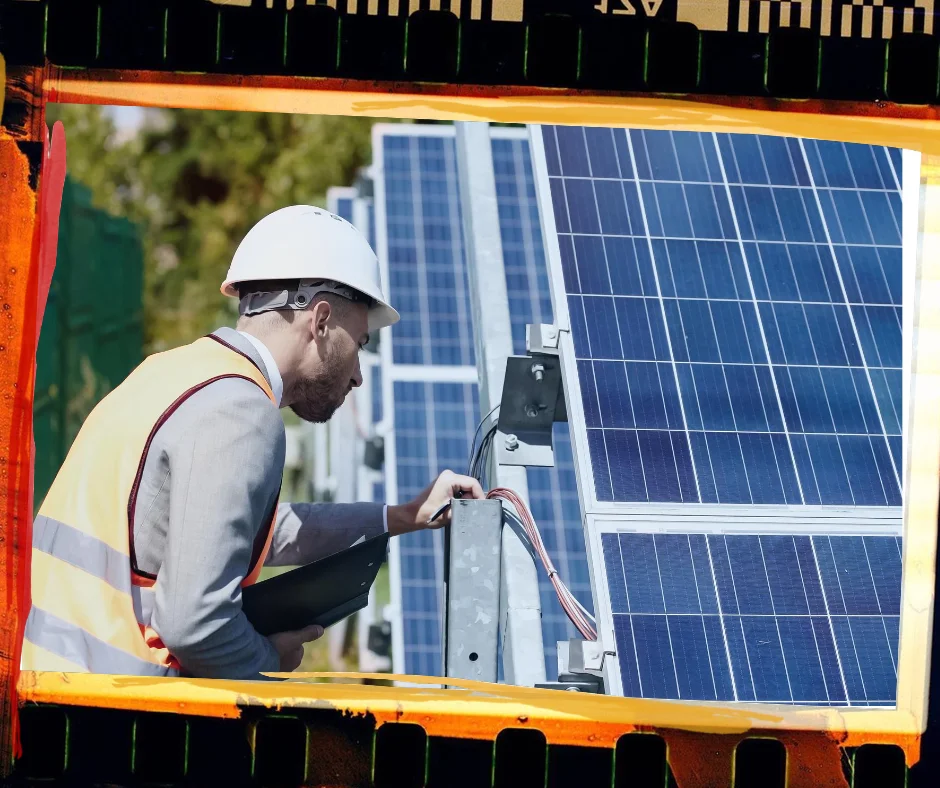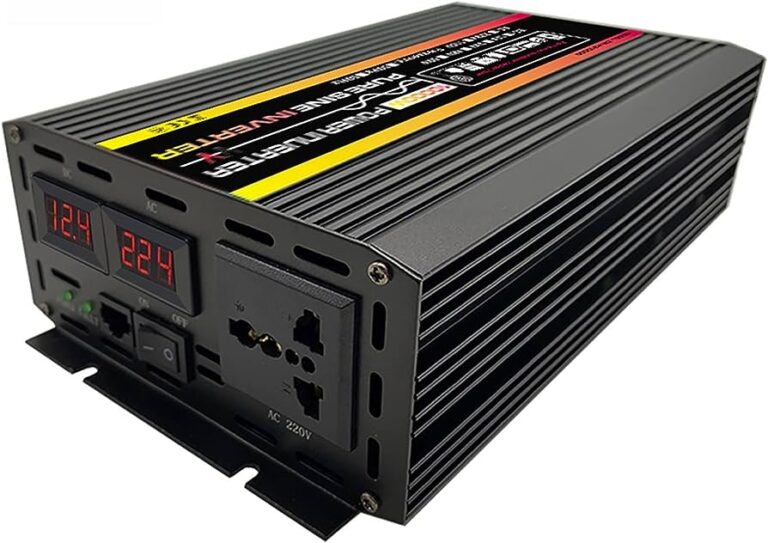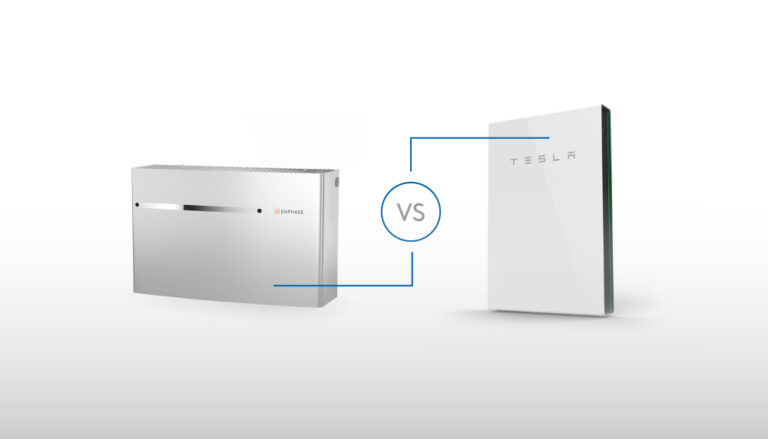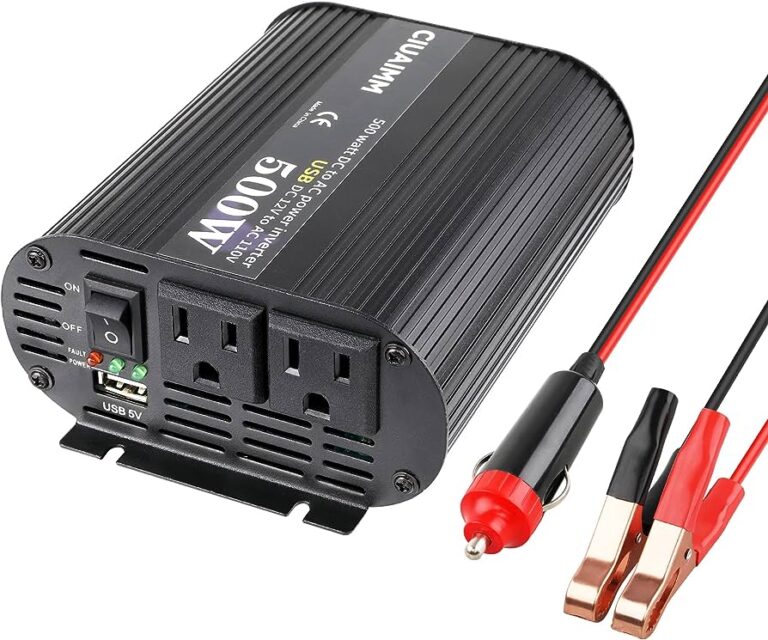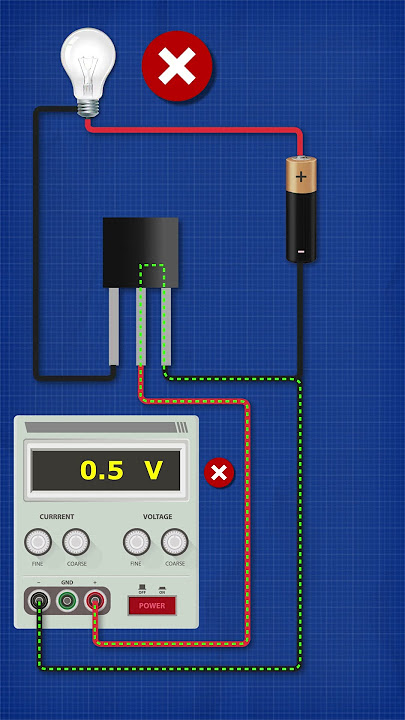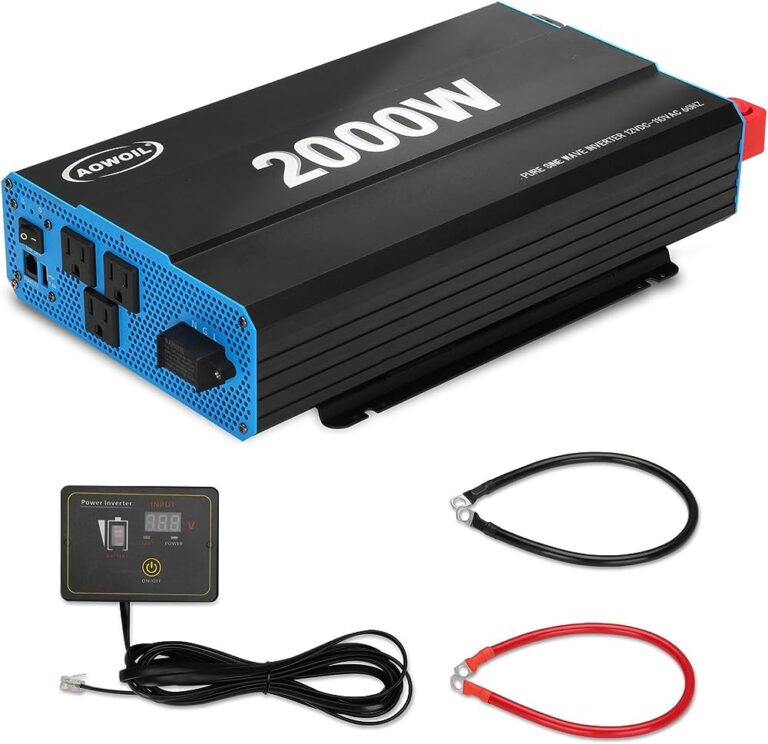How Do Solar Inverters Work: Demystifying the Science
Solar inverters convert the direct current (DC) generated by solar panels into alternating current (AC) that can be used to power electrical devices and feed into the grid. With the ability to efficiently and intelligently manage the flow of electricity, solar inverters are the essential component for optimizing solar energy production.
By converting the DC electricity produced by solar panels into AC electricity, solar inverters enable the seamless integration of solar power into the electrical grid, allowing homeowners and businesses to generate clean and sustainable energy. With their advanced features and high efficiency, solar inverters play a crucial role in optimizing solar power output and ensuring the reliable operation of solar energy systems.
The Role Of Solar Inverters In Harnessing Solar Energy
Solar inverters play a crucial role in harnessing solar energy by converting direct current (DC) generated by solar panels into alternating current (AC) usable in homes and businesses. Operating silently and efficiently, solar inverters ensure optimal energy utilization from the sun’s rays.
Conversion Of Dc To Ac: Simplifying Solar Power
Solar inverters play a crucial role in harnessing solar energy by converting the direct current (DC) generated by solar panels into alternating current (AC) that can be used to power electrical devices. This conversion process involves several steps:
- Rectification: The solar panels produce DC electricity, which is fed to the solar inverter.
- Maximum Power Point Tracking (MPPT): The inverter’s MPPT algorithm ensures that it extracts the maximum possible power from the solar panels by continuously optimizing the voltage and current levels.
- Inversion: The inverter utilizes semiconductor devices, such as transistors, to convert the DC electricity into high-quality AC electricity suitable for use in homes and businesses.
- Synchronization: The inverter synchronizes the AC electricity it generates with the utility grid’s frequency and phase, ensuring a seamless integration of power.
- Isolation: To ensure safety, solar inverters provide electrical isolation between the solar panels and the grid to prevent any faults or fluctuations from affecting the overall electrical system.
Solar inverters simplify the complexity of solar power systems and make them compatible with our everyday electrical needs.
Maximizing Electricity Generation: All About Inverter Efficiency
When it comes to maximizing the electricity generation potential of a solar power system, inverter efficiency plays a vital role. Solar inverters have a significant impact on the overall system performance, and their efficiency is determined by factors such as:
- Peak Efficiency: This refers to the maximum efficiency that an inverter can achieve under ideal conditions, ensuring the highest possible power conversion.
- Partial Load Efficiency: Inverter efficiency should be maintained even at lower power levels, as solar panels often operate at different capacities due to factors like shading or varying sunlight intensity.
- Standby Power Consumption: The inverter’s standby power consumption should be minimal to avoid unnecessary energy wastage when the system is not actively generating electricity.
- Temperature Derating: Inverter efficiency should be reliable even at higher ambient temperatures since solar panels can heat up during sunny days.
- Overall Performance Ratio: The overall performance ratio (PR) takes into account losses associated with the inverter, and it determines the system’s overall efficiency by comparing the actual power output to the maximum power output under ideal conditions.
By focusing on these aspects, solar inverters can maximize electricity generation, ensuring optimal performance for solar power systems.
Remember, solar inverters are the backbone of solar energy systems, converting DC into AC and maximizing electricity generation through their efficiency. Understanding their role is key to harnessing the full potential of solar power.
The Components Of A Solar Inverter System
Solar inverters are an essential part of the solar energy system, converting the captured DC energy into usable AC power. They play a crucial role in maintaining the efficiency and effectiveness of the solar panel system. With their advanced technology, solar inverters ensure seamless power conversion and optimal performance. Learn about the basics of inverters.
Solar Panels: Capturing Sunlight And Generating Dc Power
Solar panels are the heart of a solar inverter system. They are designed to capture sunlight and generate direct current (DC) power through a process called the photovoltaic effect. Here’s how solar panels work:
- Sunlight hits the solar panels, which are made up of photovoltaic (PV) cells.
- The PV cells, usually made of silicon, absorb the photons from sunlight.
- This absorption causes a reaction within the cells, creating an electric field.
- The electric field in the PV cells drives electrons to flow, generating DC power.
Key points:
- Solar panels capture sunlight through PV cells.
- The absorption of photons creates an electric field.
- The flow of electrons generates DC power.
Solar Charge Controllers: Regulating The Flow Of Electricity
To ensure the smooth and efficient operation of a solar inverter system, solar charge controllers play a vital role in regulating the flow of electricity. They serve the following functions:
- Overcharging protection: Solar charge controllers prevent batteries from getting overcharged, which can damage the battery and decrease its lifespan. They monitor the battery voltage and control the charging process accordingly.
- Undercharging protection: Solar charge controllers also safeguard the batteries from undercharging. They prevent energy loss by ensuring that the batteries are adequately charged and ready for use.
- Voltage regulation: Solar charge controllers maintain a consistent voltage level, optimizing the charging and discharging process and preventing damage to the battery or other system components.
- Load control: Some solar charge controllers also include load control functionality, allowing users to power specific AC or DC loads directly from the solar panels.
Key points:
- Solar charge controllers protect batteries from overcharging and undercharging.
- They regulate the voltage level for optimal performance.
- Some controllers offer load control functionality for powering specific loads directly.
Batteries: Storing And Managing Excess Energy
Batteries are an essential component of a solar inverter system as they store and manage excess energy generated by the solar panels. Here’s how batteries work:
- Storage: When the solar panels produce more energy than what is being consumed, the excess energy is stored in batteries for later use. This allows homeowners to power their homes during non-sunny periods, such as at night or during cloudy days.
- Discharge and charge: Batteries discharge their stored energy when there is no or limited sunlight available. This helps to ensure a steady and uninterrupted power supply. Once sunlight returns, batteries recharge by receiving power from the solar panels.
- Battery types: There are various types of batteries used in solar inverter systems, including lead-acid batteries, lithium-ion batteries, and flow batteries. Each type has its own advantages and considerations regarding cost, maintenance, and lifespan.
Key points:
- Batteries store excess energy for later use.
- They discharge during non-sunny periods and recharge when sunlight is available.
- Different battery types have different characteristics and considerations.
Inverters: Transforming Dc Power Into Usable Ac Power
Inverters are the final essential component of a solar inverter system. They transform the direct current (DC) power generated by the solar panels and stored in batteries into usable alternating current (AC) power. Here’s how inverters work:
- Conversion process: Inverters convert the DC power from the solar panels or batteries into AC power that can be used to power household appliances, electronics, and other devices.
- Synchronization: Inverters synchronize the generated AC power with the existing electrical grid, allowing users to leverage the power they generate and potentially sell excess electricity back to the grid.
- Output monitoring: Inverters monitor the power output, ensuring that the system is functioning optimally and that any issues are quickly identified and resolved.
- Safety features: Inverters also incorporate safety features such as isolating the system from the grid during power outages or maintenance, protecting both the user and utility workers.
Key points:
- Inverters convert DC power into AC power.
- They synchronize the generated power with the electrical grid.
- Inverters monitor the system’s performance and incorporate safety features.
Remember, a solar inverter system consists of solar panels, solar charge controllers, batteries, and inverters. Each component plays a crucial role in capturing sunlight, regulating the flow of electricity, storing excess energy, and transforming it into usable AC power.
Step-By-Step Explanation Of Inverter Operation
Solar inverters are crucial in converting the DC power produced by solar panels into AC power. This step-by-step explanation simplifies the operation of solar inverters by detailing how they work in converting and optimizing the energy generated by solar panels.
Dc Input: Receiving Power From Solar Panels
A solar inverter plays a crucial role in the process of converting sunlight into usable electricity. The first step in this operation is receiving power from the solar panels, which are made up of multiple photovoltaic cells. Here’s a step-by-step explanation of how the DC input process works:
- The solar panels absorb sunlight and convert it into direct current (DC) electricity.
- The DC power flows through the solar inverter, which acts as the heart of the system.
- As the DC power enters the inverter, it undergoes a series of transformations to convert it into alternating current (AC) electricity, which is suitable for home use.
Mppt Tracking: Optimizing Energy Harvesting
To maximize energy harvesting and ensure efficiency, solar inverters utilize Maximum Power Point Tracking (MPPT) technology. Here’s how MPPT tracking works:
- MPPT technology constantly analyzes the output of the solar panels and adjusts the voltage and current to achieve the maximum power output.
- By continuously tracking the panel’s maximum power point, the solar inverter ensures that the system is operating at peak performance even under varying conditions like shading or temperature changes.
- This optimization process helps to extract the maximum amount of energy from the solar panels, leading to higher electricity production.
Conversion To Ac: Generating Usable Electricity
After optimizing the energy harvesting process, the solar inverter converts the DC electricity produced by the solar panels into AC electricity, which is the type of electrical current used in homes and businesses. Here’s how the conversion process takes place:
- The DC power undergoes a two-step conversion process. First, it is converted into a high-frequency AC voltage.
- Next, this high-frequency AC voltage is transformed into a standard frequency AC voltage, commonly 50 or 60 Hz, depending on the local grid requirements.
- The conversion is accomplished using power electronics such as switches and transformers within the inverter, ensuring that the generated AC electricity is compatible with the electrical grid.
Synchronization With Grid: Ensuring Compatibility
Once the AC electricity is generated, the solar inverter synchronizes with the electrical grid to ensure the compatibility of the power generated by the solar panels. Here’s how this synchronization process works:
- The solar inverter’s internal electronics monitor the voltage and frequency of the electrical grid.
- When the grid conditions are met, the solar inverter synchronizes itself with the grid and starts feeding the excess electricity into it.
- This synchronization process is essential to avoid any disruptions or imbalances in the electrical grid, ensuring safe and reliable operation.
Power Output: Utilizing Electricity For Consumption
The final step in the operation of a solar inverter is to utilize the generated electricity for consumption. Here’s how this power output process works:
- The solar inverter supplies the AC electricity to your home’s electrical system, allowing you to power various appliances and devices.
- If the solar panel system generates more electricity than needed, the excess power can be either stored in batteries for later use or exported back to the grid for credit.
- By utilizing solar power, you can reduce your reliance on the grid and benefit from lower energy bills, while also contributing to a greener and more sustainable future.
Now that you have a step-by-step understanding of how solar inverters work, you can appreciate their importance in harnessing the power of sunlight and converting it into usable electricity for your everyday needs.
Key Technologies In Modern Solar Inverters
Solar inverters, an essential component of solar energy systems, play a vital role in converting direct current (DC) from solar panels into alternating current (AC) for use in households or for exporting to the grid. By employing key technologies such as maximum power point tracking (MPPT) and grid synchronization, solar inverters ensure optimal efficiency and seamless integration with the electrical grid.
Microinverters: Enhancing Efficiency And Flexibility
Microinverters are a key technology in modern solar inverters, offering numerous advantages in terms of efficiency and flexibility in solar power systems. Here’s a closer look at how microinverters work and the benefits they bring:
- Microinverters are small devices that are installed on each solar panel in a photovoltaic (PV) system. Unlike traditional string inverters that are connected to multiple panels, microinverters operate independently for each panel.
- This individual panel-level optimization allows microinverters to deliver higher energy yields compared to string inverters. By optimizing the performance of each panel, any issues with shading, dirt, or panel mismatch are mitigated, resulting in increased overall system efficiency.
- With microinverters, the output of each solar panel is independent of the others. This means that if one panel is underperforming due to shading or other factors, the rest of the panels in the system will still generate power at their maximum capacity. This ensures a higher level of system flexibility and increased energy production.
- Another advantage of microinverters is their ability to monitor the performance of each individual panel in real-time. This high level of monitoring granularity enables early detection of potential issues, simplifying maintenance and troubleshooting processes.
- The installation process for microinverters is also simpler compared to string inverters. Since microinverters are connected directly to each panel, there is no need for complex wiring configurations or calculations for string sizing. This makes microinverters a more flexible choice for both new installations and retrofitting existing solar systems.
String Inverters: Simplifying Large-Scale Solar Installations
String inverters are the most commonly used type of solar inverters in large-scale solar installations. They offer certain advantages that make them ideal for these applications. Here’s an overview of how string inverters work and their benefits:
- String inverters are designed to convert the direct current (DC) produced by solar panels into alternating current (AC) for use in the electrical grid or for on-site consumption. In a string inverter setup, multiple panels are connected in series, forming a string of panels.
- This series configuration allows for the combining of the DC output from multiple panels before it is converted into AC power. By having fewer inverters compared to microinverters, string inverters simplify the overall system design and reduce installation costs, particularly in large-scale solar installations.
- With string inverters, the overall system performance is dependent on the lowest-performing panel in each string. Shading, dirt, or other issues affecting one panel can potentially decrease the energy production of the entire string. To address this, proper string sizing and considering the effects of shading during system design are crucial.
- String inverters typically have a higher power capacity compared to microinverters, making them well-suited for larger PV systems. Their robust design and ability to handle higher power levels make them a cost-effective choice for utility-scale solar plants and commercial installations.
- Monitoring the performance of a string inverter system is done at the string level rather than at the individual panel level. This provides a good overview of the system’s performance but offers less granularity for identifying specific panel issues. However, advancements in string inverter technology now allow for more detailed string-level monitoring, enhancing maintenance and troubleshooting capabilities.
Hybrid Inverters: Integrating Battery Storage For Energy Management
Hybrid inverters play a crucial role in integrating battery storage with solar power systems, enabling efficient energy management and maximizing self-consumption. Here’s an insight into hybrid inverters and their benefits:
- Hybrid inverters are designed to work with both solar panels and energy storage systems, allowing for the seamless integration of battery storage into a solar PV system. These inverters can effectively manage the flow of energy between the solar panels, battery storage, and the electrical grid.
- One of the key advantages of hybrid inverters is their ability to optimize self-consumption of solar energy. During peak solar production, excess energy can be stored in the battery for later use, reducing reliance on the grid during periods of low solar production or at night.
- Hybrid inverters offer the flexibility of different operational modes, including grid-tied, off-grid, and hybrid (combination of grid-tied and off-grid), depending on the user’s requirements. This allows for greater self-sufficiency, energy independence, and the option to operate in off-grid mode during power outages or in remote locations.
- With reliable energy storage capabilities, hybrid inverters enable homeowners and businesses to store excess solar energy and use it during high-demand periods when electricity costs are typically higher. This helps to reduce electricity bills and provides a higher level of control over energy consumption.
- Hybrid inverters also provide backup power capability, allowing critical loads to be powered during grid outages. This is particularly beneficial for applications where reliable power supply is essential, such as residential homes, businesses, and healthcare facilities.
By understanding the key technologies in modern solar inverters, including microinverters, string inverters, and hybrid inverters, you can make informed decisions when it comes to choosing the most suitable solution for your solar power system. These technologies not only enhance the efficiency and flexibility of solar installations but also pave the way for a more sustainable and energy-independent future.
Evaluating Inverter Performance
Solar inverters play a crucial role in the performance of solar energy systems. By converting direct current (DC) generated by solar panels into alternating current (AC) used in homes and businesses, solar inverters enable the efficient utilization of solar power.
Understanding and evaluating inverter performance is essential for ensuring optimal energy production from solar installations.
Solar inverters play a crucial role in transforming the direct current (DC) electricity generated by solar panels into usable alternating current (AC) electricity. But how can we evaluate the performance of solar inverters? In this section, we’ll explore three key aspects: efficiency ratings, power curves, and fault detection.
Efficiency Ratings: Understanding And Interpreting Specifications
To assess the efficiency of a solar inverter, it’s essential to examine its efficiency ratings. Here’s what you need to know about understanding and interpreting these specifications:
- Conversion Efficiency: This measures how effectively the inverter converts DC electricity into AC electricity. A higher value indicates better conversion efficiency.
- CEC (California Energy Commission) Efficiency: This rating provides a standardized measurement for comparing the efficiency of different inverters. Look for inverters with high CEC efficiency ratings.
- Peak Efficiency: This represents the highest efficiency level the inverter can achieve under optimal conditions. Consider inverters with higher peak efficiency values for maximum performance.
Power Curves: Analyzing Output At Different Levels Of Solar Irradiation
Power curves provide valuable insights into how solar inverters perform across a range of solar irradiation levels. When analyzing power curves, keep the following points in mind:
- Output at Low Irradiance: This describes how well the inverter operates during cloudy or low-light conditions. Look for a smooth power curve with good performance at low irradiance levels.
- Output at High Irradiance: The inverter’s performance under full sunlight is crucial as it directly impacts energy production. A steep power curve signifies better performance in high irradiance conditions.
- MPP (Maximum Power Point) Tracking: Efficient inverters continuously adjust the electrical load to maximize power generation. Look for inverters with accurate MPP tracking, ensuring optimal performance under varying solar conditions.
Fault Detection: Identifying And Troubleshooting Inverter Issues
To ensure the smooth operation and longevity of your solar inverter, it’s important to be able to detect and troubleshoot any potential faults. Consider the following points when evaluating fault detection capabilities:
- Error Code Display: Inverters with clear error code displays simplify troubleshooting. Look for models that provide comprehensive error code listings and detailed explanations.
- Monitoring and Alert Systems: Advanced inverters offer remote monitoring capabilities, allowing you to keep track of system performance and receive timely alerts for any faults.
- Compatibility with Monitoring Software: Some inverters are compatible with specific monitoring software, providing enhanced fault detection and diagnostic features. Check if your chosen inverter integrates with compatible software for efficient troubleshooting.
By understanding and evaluating efficiency ratings, power curves, and fault detection capabilities, you can make informed decisions when selecting a solar inverter. These factors not only impact the overall performance of your solar energy system but also ensure its reliability and longevity.
Monitoring And Data Analysis: Optimization And Troubleshooting
Solar inverters play a crucial role in converting the direct current from solar panels into usable alternating current. Through monitoring and data analysis, they optimize and troubleshoot any performance issues, ensuring the smooth operation of solar energy systems.
Solar inverters are the heart of a solar power system, responsible for converting the DC electricity generated by solar panels into usable AC electricity for homes and businesses. But did you know that solar inverters also play a crucial role in monitoring and analyzing the performance of your solar system?
In this section, we’ll explore how solar inverters enable remote monitoring, data analysis, and troubleshooting to optimize your system’s performance and address any issues that may arise.
Remote Monitoring: Real-Time Performance Tracking
- Monitor your solar system’s performance from anywhere, anytime, using remote monitoring capabilities provided by solar inverters.
- Access real-time data on energy production, system efficiency, and overall performance to stay informed about the health of your system.
- Receive alerts and notifications about any performance issues or anomalies, allowing you to take immediate action.
Data Analysis: Identifying Performance Patterns And Anomalies
- Solar inverters collect and store comprehensive data about your system’s performance, including energy production, voltage levels, and temperature.
- Analyze this data to identify patterns and trends in energy production, helping you optimize the efficiency of your system.
- Detect anomalies or deviations from expected performance, such as sudden drops in energy production, which may indicate underlying issues that require attention.
Troubleshooting Common Inverter Problems: Solutions And Maintenance Tips
- Solar inverters can encounter various issues over time, but they often come with built-in troubleshooting features to help address these problems.
- Common inverter problems include grid connection issues, faulty wiring, or component failures. Refer to the manufacturer’s instructions for specific troubleshooting steps.
- Regular maintenance, such as cleaning the panels and checking for loose connections, can help prevent inverter problems and ensure optimal performance.
Remember, monitoring and analyzing your solar system’s performance is crucial for maximizing energy generation and identifying any issues early on. With remote monitoring capabilities, you can keep an eye on your system’s real-time performance, while data analysis helps you optimize efficiency and troubleshoot any potential problems.
By understanding how solar inverters work in harmony with monitoring and data analysis, you can ensure the smooth operation of your solar power system for years to come.
Why is an Inverter Important for Solar Panel Systems?
An efficient inverter for solar panels is crucial for optimizing the energy generated by solar panel systems. It converts the direct current (DC) produced by the panels into usable alternating current (AC) for household appliances. The inverter ensures maximum power output by tracking the solar panel’s peak performance and adjusting accordingly. Its role in converting and managing electricity makes it an essential component for effective solar energy utilization.
Can I Use the Same Steps to Make a Solar Inverter?
To make a solar inverter, one can consult a step-by-step inverter construction guide. This comprehensive guide explains the necessary steps required for constructing a functional solar inverter accurately. It provides detailed instructions, ensuring a systematic approach throughout the process. By following this guide, individuals can successfully create their own solar inverters with ease.
Frequently Asked Questions Of How Do Solar Inverters Work
How Does An Inverter Work On A Solar Battery?
An inverter on a solar battery converts the direct current (DC) produced by the solar panels into alternating current (AC) that can be used to power household appliances. The solar panels on a rooftop or at a solar power plant generate electricity in the form of DC.
The inverter then takes this DC electricity and converts it into AC electricity, which is the type of electricity used by most household appliances. This conversion process involves changing the frequency and voltage of the electricity to match the standards of the local electrical grid.
The AC electricity produced by the inverter can be used immediately to power appliances in the home or business. If there is excess electricity generated that is not immediately used, it can be fed back into the electrical grid for others to use.
In this way, the inverter plays a crucial role in making solar-generated electricity usable for everyday applications.
What Are The Disadvantages Of Solar Inverter?
The disadvantages of solar inverters include higher upfront costs, dependence on sunlight, potential efficiency losses, and noise issues. Higher upfront costs are a major drawback, as solar inverters can be expensive to purchase and install. Additionally, solar inverters rely on sunlight to generate electricity, meaning their performance may be affected by cloudy or shaded conditions.
Efficiency losses can also occur due to factors such as voltage drops and mismatched components. Furthermore, some solar inverters may produce noise during operation, which can be a concern in residential areas. These disadvantages should be considered when deciding to install a solar inverter system.
However, with proper planning and maintenance, the benefits of solar power generation still outweigh the drawbacks for many households and businesses.
What Is The Difference Between A Solar Converter And A Solar Inverter?
A solar converter and a solar inverter have different functions in a solar power system. The solar converter is responsible for converting DC (direct current) power produced by the solar panels into AC (alternating current) power, which is used to power household appliances.
On the other hand, the solar inverter is responsible for converting the AC power from the utility grid into DC power that can be stored in batteries for later use. In simpler terms, the solar converter converts solar power into usable electricity, while the solar inverter converts electricity from the grid or batteries into a form that can be used by household appliances.
How Does Solar Inverter Connect To House?
The solar inverter connects to the house through a process called grid-tie or on-grid installation. It is connected to the main electrical panel in the house. The inverter converts the direct current (DC) electricity produced by the solar panels into alternating current (AC) electricity that can be used in the household.
An AC disconnect switch is installed between the inverter and the main panel for safety purposes. This switch allows the homeowner to turn off the solar power supply if necessary. The inverter also connects to the utility grid through a net meter, which measures the electricity produced by the solar panels and any excess electricity that is fed back into the grid.
This allows the homeowner to earn credits or receive compensation for the excess electricity they produce. The process of connecting the solar inverter to the house is typically done by a professional installer to ensure proper installation and safety compliance.
Conclusion
Solar inverters are essential components of solar power systems as they convert direct current (DC) generated by solar panels into the alternating current (AC) that can be used to power household appliances and feed back into the grid. By using a series of complex processes and advanced technologies, solar inverters optimize the efficiency and performance of solar energy systems.
From their role in transforming the DC current to their ability to monitor and regulate the flow of electricity, solar inverters play a critical role in maximizing the energy output and reliability of solar power installations. As the demand for renewable energy continues to grow, understanding how solar inverters work is crucial in harnessing the power of the sun and contributing to a cleaner, more sustainable future.
By embracing this technology, we can truly unlock the potential of solar energy and pave the way for a greener tomorrow.

